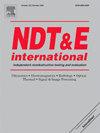焊点x射线显微图像的超分辨率增强
IF 4.1
2区 材料科学
Q1 MATERIALS SCIENCE, CHARACTERIZATION & TESTING
引用次数: 0
摘要
本研究探讨了单图像超分辨率(SISR)的应用,以增强用于焊点检测的3D x射线显微镜(XRM)图像。使用3种不同体素尺寸(2 μm、1.5 μm和0.5 μm)扫描焊点,并将最高分辨率(0.5 μm)与双三次下采样图像配对作为训练数据集。开发并训练了两个增强的亚像素卷积神经网络(ESPCN)模型来重建高分辨率(HR)图像。采用结构相似指数(SSIM)和学习感知图像斑块相似度(LPIPS)对ESPCN1和ESPCN2模型进行评价。两种模型的峰值信噪比(PSNR)分别为40.01 dB (ESPCN1)和40.33 dB (ESPCN2),具有较强的图像重建能力。与低分辨率扫描相比,超分辨率模型导致SSIM(12.0%)和LPIPS(13.8%)值显著增加,ESPCN1在2 μm体素尺寸上表现出色,ESPCN2在1.5 μm体素尺寸上表现更好。当与地面真值0.5 μm扫描相比,两种模型都显示出相当的结果,与横向评估相比,ESPCN2略微优于ESPCN1。总体而言,该研究表明,超分辨率模型可以提高低分辨率XRM图像的质量,在减少扫描时间的同时提供与高分辨率扫描相当的性能,从而证明了SISR在工业检测应用中的实用性。本文章由计算机程序翻译,如有差异,请以英文原文为准。
Super-resolution enhancement of X-ray microscopic images of solder joints
This study explores the application of single-image super-resolution (SISR) to enhance 3D X-ray microscopy (XRM) images for solder joint inspection. Three different voxel sizes (2 μm, 1.5 μm, and 0.5 μm) were used to scan solder joints, with the highest resolution (0.5 μm) serving as the training dataset by pairing it with bicubic down-sampled images. Two enhanced sub-pixel convolutional neural network (ESPCN) models were developed and trained to reconstruct high-resolution (HR) images. The models – ESPCN1 and ESPCN2 – were evaluated using structural similarity index (SSIM) and learned perceptual image patch similarity (LPIPS). Both models achieved high peak signal-to-noise ratio (PSNR) values of 40.01 dB (ESPCN1) and 40.33 dB (ESPCN2), demonstrating strong image reconstruction capabilities. Super-resolution models led to a significant increase in SSIM (12.0 %) and LPIPS (13.8 %) values compared to lower-resolution scans, with ESPCN1 excelling at the 2 μm voxel size and ESPCN2 showing better performance for 1.5 μm. Both models exhibited comparable results when compared to ground truth 0.5 μm scans, with ESPCN2 marginally outperforming ESPCN1 in comparison to cross-sectional evaluations. Overall, the study demonstrates that super-resolution models can enhance the quality of lower-resolution XRM images, offering comparable performance to high-resolution scans while reducing scanning time, thus proving the utility of SISR in industrial inspection applications.
求助全文
通过发布文献求助,成功后即可免费获取论文全文。
去求助
来源期刊

Ndt & E International
工程技术-材料科学:表征与测试
CiteScore
7.20
自引率
9.50%
发文量
121
审稿时长
55 days
期刊介绍:
NDT&E international publishes peer-reviewed results of original research and development in all categories of the fields of nondestructive testing and evaluation including ultrasonics, electromagnetics, radiography, optical and thermal methods. In addition to traditional NDE topics, the emerging technology area of inspection of civil structures and materials is also emphasized. The journal publishes original papers on research and development of new inspection techniques and methods, as well as on novel and innovative applications of established methods. Papers on NDE sensors and their applications both for inspection and process control, as well as papers describing novel NDE systems for structural health monitoring and their performance in industrial settings are also considered. Other regular features include international news, new equipment and a calendar of forthcoming worldwide meetings. This journal is listed in Current Contents.
 求助内容:
求助内容: 应助结果提醒方式:
应助结果提醒方式:


